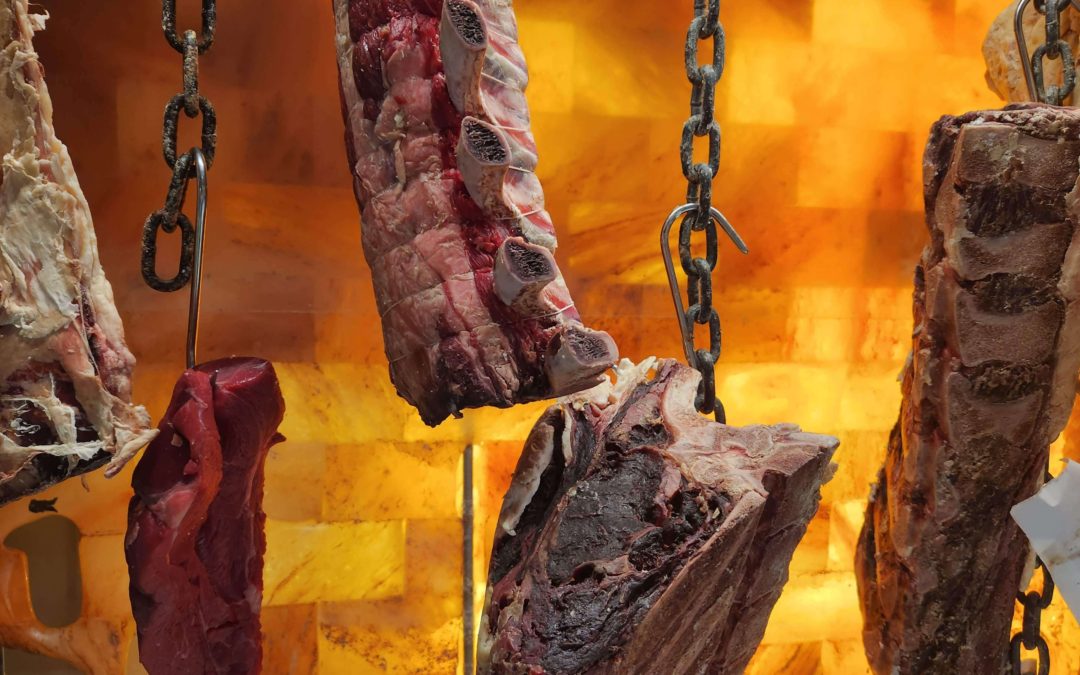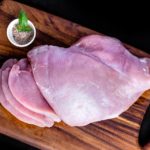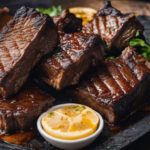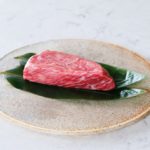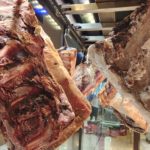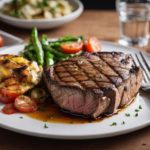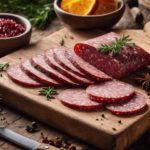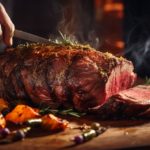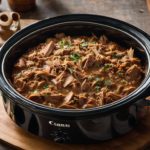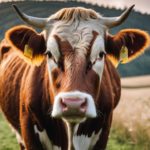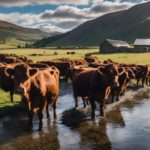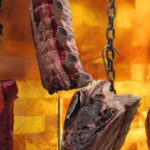I recently had the opportunity to embark on a culinary adventure like no other – exploring the flavorful world of dry aged prime rib. As a food enthusiast, I have always admired the artistry and skill involved in creating the perfect cut of meat.
But little did I know, dry aging takes this experience to a whole new level. With its intense depth of flavor and melt-in-your-mouth tenderness, dry aged prime rib is an exquisite dining experience that will leave your taste buds yearning for more. Let me take you on a journey as we uncover the secrets behind this culinary masterpiece.
What is Dry Aging?
Definition of Dry Aging
Dry aging is a method of aging meat that involves exposing it to controlled conditions of temperature, humidity, and air circulation. During this process, the meat undergoes natural enzymatic reactions, which result in the breakdown of muscle fibers and the intensification of flavors. Dry aging is typically done with cuts of beef, such as prime rib, to enhance their tenderness and develop a rich, concentrated taste.
Process of Dry Aging
The process of dry aging begins by carefully selecting a high-quality piece of prime rib. This cut of beef is known for its marbling, which is the dispersion of fat throughout the meat. The prime rib is then placed in a special aging room or refrigerated chamber, where it is exposed to controlled levels of humidity and temperature.
The meat is left to age for a specific period of time, which can range from a few weeks to several months, depending on desired results. During the aging process, enzymes in the meat break down proteins and connective tissues, resulting in increased tenderness and flavor development.
Why Dry Age Prime Rib?
Enhanced Flavor and Tenderness
Dry aging prime rib enhances its flavor and tenderness in a way that cannot be achieved through other methods. The controlled conditions of the aging process allow the natural enzymes in the meat to break down tough muscle fibers, resulting in a more tender and juicy texture.
Additionally, the aging process promotes the concentration of flavors, creating a more intense and complex taste profile. The rich, nutty flavor and buttery texture of dry aged prime rib are highly sought after by meat connoisseurs.
Concentration of Natural Beef Flavors
Dry aging prime rib also leads to the concentration of the meat’s natural beef flavors. As the moisture evaporates from the meat during the aging process, the flavors become more concentrated, resulting in a deeper and more robust taste. The umami notes intensify, complementing the natural sweetness of the beef. This concentration of flavors enhances the overall dining experience and elevates the enjoyment of prime rib.
Selecting the Right Piece of Prime Rib
Choosing the Grade of Beef
When selecting a prime rib for dry aging, it is crucial to choose a high-quality beef grade. The USDA grades beef based on its marbling, tenderness, and overall quality. The highest grade is “Prime,” which has a generous amount of marbling and results in the most tender and flavorful prime rib.
However, “Choice” grade can also produce excellent results with proper aging techniques. It is essential to choose a prime rib with even marbling throughout the meat, as this will contribute to a well-balanced flavor and texture.
Considering the Size and Weight
The size and weight of the prime rib are essential factors to consider when selecting the right cut for dry aging. The size of the cut will determine the length of the aging period, as larger cuts generally require more time to achieve optimal results.
It is recommended to choose a prime rib with at least three ribs, as smaller cuts may not yield as significant of an improvement in flavor and tenderness. Additionally, consider the number of guests you will be serving to ensure you have an ample portion size.
Preparation and Seasoning
Trimming Excess Fat
Before the dry aging process begins, it is advisable to trim excess fat from the prime rib. This step ensures that the meat will age evenly and allows for proper air circulation around the meat. However, be cautious not to remove all of the fat, as it contributes to the flavor and juiciness of the prime rib. A thin layer of fat can protect the meat during the aging process and enhance its overall tenderness.
Applying Dry Rub or Marinade
To enhance the flavor of the prime rib, consider applying a dry rub or marinade before the aging process begins. A dry rub can consist of a combination of herbs, spices, and salt, which is massaged into the meat to impart additional flavors. Alternatively, a marinade can be made using a mixture of liquids, such as soy sauce, Worcestershire sauce, and garlic, to infuse the prime rib with a savory taste. The choice of seasoning ultimately depends on personal preferences and desired flavors.
The Dry Aging Process
Dry Aging in a Controlled Environment
The dry aging process requires a controlled environment with specific temperature and humidity levels. The ideal temperature for dry aging prime rib is between 34°F to 38°F (1°C to 3°C), which prevents the growth of harmful bacteria while allowing the natural enzymes to work their magic.
The humidity levels should be around 85% to 90%, as higher humidity helps to prevent the meat from drying out. Specialized aging rooms or refrigerated chambers are often used to create these ideal conditions during the aging process.
Length of Aging Period
The length of the aging period for prime rib can vary depending on personal preference and desired results. Typically, dry aging prime rib is aged for a minimum of 21 days, allowing enough time for the enzymatic reactions to take place and for the flavors to develop.
However, some meat enthusiasts prefer longer aging periods, up to 45 or even 60 days, as this can result in even more pronounced flavors and tenderness. It is important to note that longer aging periods may yield more intense flavors, but the meat can also lose more moisture and some weight.
Proper Storage and Handling
Refrigeration and Temperature Control
After the dry aging process is complete, proper storage and handling are crucial to maintain the quality and safety of the prime rib. It is essential to keep the aged meat refrigerated at all times, preferably in a separate drawer or container to prevent cross-contamination with other foods. The temperature should be maintained between 32°F to 36°F (0°C to 2°C) to slow down the growth of bacteria and maintain the desired texture and flavor. Regularly monitor the temperature to ensure it stays within the recommended range.
Protective Packaging
To prevent the prime rib from coming into direct contact with the air and potentially drying out, it is advisable to use protective packaging during storage. Vacuum-sealed bags are commonly used for this purpose, as they create an airtight seal that preserves the integrity of the meat.
However, if vacuum-sealing is not possible, wrapping the aged prime rib tightly in multiple layers of plastic wrap can also provide adequate protection. The packaging should be checked regularly for any signs of damage or air leaks, as this can affect the quality of the meat.
Cooking Techniques for Dry Aged Prime Rib
Oven Roasting
Oven roasting is one of the most popular methods for cooking dry aged prime rib. Preheat the oven to a high temperature, such as 450°F (232°C), to achieve a crispy and flavorful crust on the outside while retaining the juicy interior.
Place the prime rib on a rack in a roasting pan, with the fatty side facing up. Season the meat with salt, pepper, and any other desired herbs or spices.
Roast the prime rib at high heat for the initial searing, then lower the temperature to around 325°F (163°C) and continue cooking until it reaches the desired internal temperature. Use a meat thermometer to ensure accurate doneness: 125°F (52°C) for medium-rare, 135°F (57°C) for medium, and 145°F (63°C) for medium-well.
Grilling
Grilling is another fantastic option for cooking dry aged prime rib, as it imparts a smoky flavor and gives the meat a beautiful sear. Before grilling, allow the prime rib to come to room temperature for even cooking.
Preheat the grill to medium-high heat, approximately 400°F (204°C). Season the prime rib with salt, pepper, and any desired spices or marinades. Place the meat on the hot grill, initially searing each side for a few minutes to create a crispy crust.
After searing, move the prime rib to indirect heat, close the lid, and continue grilling until it reaches the desired internal temperature. Remember to use a meat thermometer to ensure accurate cooking: 125°F (52°C) for medium-rare, 135°F (57°C) for medium, and 145°F (63°C) for medium-well.
Serving Suggestions
Accompaniments and Side Dishes
Dry aged prime rib pairs beautifully with a variety of accompaniments and side dishes. Classic options include creamy mashed potatoes, buttered vegetables, and a rich, flavorful gravy made from the drippings of the prime rib.
For an added touch of elegance, consider serving roasted root vegetables or a mixed green salad with a tangy vinaigrette. The prime rib’s intense flavors also complement earthy mushrooms or a creamy horseradish sauce. Experimentation with different sides can add depth and variety to the dining experience.
Recommended Wine Pairings
To complete the dining experience, choosing the right wine to pair with dry aged prime rib is essential. The rich, robust flavors of the meat harmonize well with full-bodied red wines. A classic choice is a bold Cabernet Sauvignon, which offers notes of black fruit and cedar that complement the savory flavors of the prime rib.
Other suitable options include Malbec, Merlot, or a hearty Syrah. For those who prefer white wine, a full-bodied Chardonnay with creamy, buttery notes can provide a nice contrast to the richness of the meat.
Tips for a Perfect Dry Aged Prime Rib
Resting the Meat
Allowing the prime rib to rest after cooking is a crucial step for achieving a perfect result. Resting allows the juices to redistribute evenly throughout the meat, resulting in a more tender and flavorful final product. After cooking, remove the prime rib from the heat source and tent it loosely with aluminum foil. Let it rest for at least 15-20 minutes before carving to ensure optimal results.
Slicing Techniques
When it comes to slicing dry aged prime rib, using the correct technique is essential for maintaining the meat’s tenderness and presentation. For the best results, use a sharp carving knife and slice against the grain of the meat.
This will help to break up the muscle fibers and ensure each slice is tender and easy to chew. Cut the prime rib into thin slices, approximately 1/2 inch to 3/4 inch thick, to preserve the meat’s juiciness and prevent it from becoming overly chewy.
Differences Between Dry Aging and Wet Aging
Moisture Content
One key difference between dry aging and wet aging is the moisture content. Dry aging involves the deliberate loss of moisture from the meat, resulting in a more concentrated flavor and a firmer texture. The outer layer of the meat forms a protective crust, while the interior becomes tender and juicy.
Wet aging, on the other hand, takes place in vacuum-sealed bags, which retain the meat’s moisture. This method allows enzymes to break down the tissues and enhance tenderness, but the flavors may not be as concentrated as in dry-aged meat.
Texture and Tenderness
Dry aging and wet aging also differ in their effects on texture and tenderness. Dry aged prime rib typically has a firm texture with a caramelized crust on the outside and a tender, buttery interior. The extended aging process breaks down the muscle fibers, resulting in a melt-in-your-mouth sensation. Wet aging, on the other hand, produces a more tender texture throughout the meat but may lack the distinct caramelization and intensity of flavors achieved through dry aging.
In conclusion, dry aged prime rib offers a unique and exceptional dining experience for meat lovers. The careful selection of high-quality beef, proper aging techniques, and precise cooking methods all contribute to the exceptional flavor and tenderness of dry aged prime rib.
By following these guidelines and understanding the differences between dry aging and wet aging, you can enjoy a culinary masterpiece that is sure to impress and delight your taste buds. So why not embark on a flavor adventure and indulge in the flavorful world of dry aged prime rib? Your taste buds will thank you!
Greetings!
With over two decades of diverse experience in the meat industry, I proudly stand as an expert in all things meat. My journey commenced with a strong foundation in hospitality, where I honed my culinary skills as a chef in prestigious restaurants and on luxurious superyachts worldwide.
However, my true passion lies in the art of butchery. Throughout my extensive career, I have had the privilege of working with renowned meat purveyors and mastering the craft of meat cutting and preparation. From breaking down whole carcasses to meticulously selecting prime cuts, my butchery expertise is at the core of my meat knowledge.
Having immersed myself in various cultures and cuisines, I have honed my skills to deliver exceptional dining experiences, crafting delectable dishes that celebrate the natural flavors of different meats. Whether it’s sourcing the finest meats for discerning clients or sharing valuable tips on meat selection and cooking, I take pride in elevating the meat experience for both professionals and enthusiasts.
My journey has taken me from the bustling kitchens of top-rated restaurants to the heart of meat processing facilities, gaining insights and honing my skills to become a true meat connoisseur. Now, I am enthusiastic about sharing my expertise, offering valuable insights on meat selection, cooking techniques, and the art of butchery.

